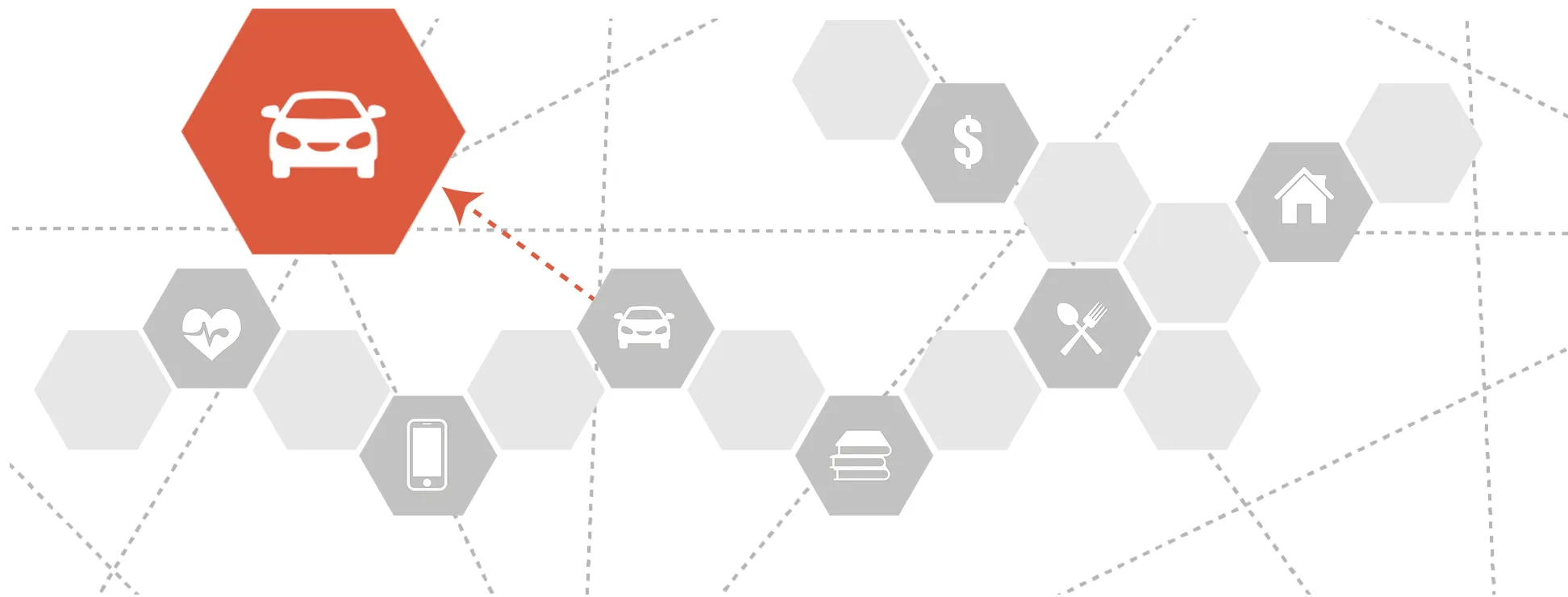
|
Housingclick to view |

|
Health Careclick to view |

|
Child Care and Educationclick to view |

|
Technologyclick to view |

|
Foodclick to view |

|
Taxesclick to view |

|
Transportationclick to view |
||
Broader Costs of Unaffordable Transportation
Transportation-related “cost-cutting” strategies have consequences not only for ALICE households, but also for the local economy and the wider community:
- Older vehicles that may need repairs make driving less safe and increase pollution for all. More older vehicles on the road – as during the Recession, when sales of new vehicles declined – means higher levels of harmful emissions.25
- Uninsured vehicles increase costs for all motorists. These costs, largely borne by insurance companies, are passed on to insured drivers in the form of higher premiums. Nationwide, uninsured motorists add $67 per year to the bill of a typical policyholder.26
- Lack of reliable transportation can exacerbate an emergency. When there is an emergency, such as a child being sick or injured, lack of access to reliable transportation can result in poor options for ALICE families: forgo treatment, rely on friends or neighbors for transportation, or resort to an ambulance to get to a hospital, which also increases costs for all taxpayers. Providing non-emergency transportation (e.g., shuttles to doctor appointments or ambulatory care centers) for those without reliable transportation is also expensive, especially in rural areas.27
Sources
24
Smart Growth America. (2014). Measuring sprawl 2014. Retrieved from http://old.smartgrowthamerica.org/measuring-sprawl
25
Bishop, G., & Stedman, D. (2014). The recession of 2008 and its impact on light-duty vehicle emissions in three western United States cities. Environmental Science and Technology, 48(24),14822–14827. Retrieved from http://pubs.acs.org/doi/abs/10.1021/es5043518?source=cen&
26
Insurance Research Council. (2017). One in eight drivers uninsured. Retrieved from https://www.insurance-research.org/sites/default/files/downloads/UMNR1005.pdf
Wiltz, T. (February 20, 2015). Why uninsured drivers cost us over $2.6 billion a year. The Fiscal Times. Retrieved from http://www.thefiscaltimes.com/2015/02/20/Why-Uninsured-Drivers-Cost-Us-Over-26-Billion-Year
27
Myers, A. (2015, January 7). Non-emergency medical transportation: A vital lifeline for a healthy community. National Conference of State Legislatures. Retrieved from http://www.ncsl.org/research/transportation/non-emergency-medical-transportation-a-vital-lifeline-for-a-healthy-community.aspx

